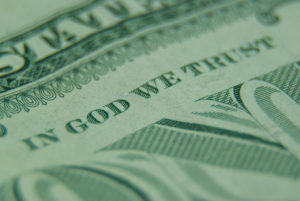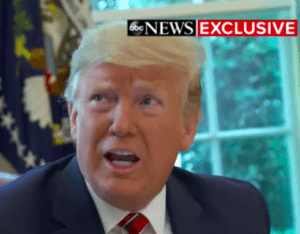Why Is the Fed Paying So Much Interest to Banks?
Our financial institutions have become dangerously interconnected and vulnerable to sudden runs. Postal banking offers a safe alternative. Wikimedia Commons
Wikimedia Commons
“If you invest your tuppence wisely in the bank, safe and sound, Soon that tuppence safely invested in the bank will compound, And you’ll achieve that sense of conquest as your affluence expands In the hands of the directors who invest as propriety demands.” — “Mary Poppins,” 1964
When “Mary Poppins” was made into a movie in 1964, Mr. Banks’ advice to his son was sound. The banks were then paying more than 5% interest on deposits, enough to double young Michael’s investment every 14 years.
Now, however, the average savings account pays only 0.10% annually—that’s one-tenth of 1%—and many of the country’s biggest banks pay less than that. If you were to put $5,000 in a regular Bank of America savings account (paying 0.01%) today, in a year you would have collected only 50 cents in interest.
That’s true for most of us, but banks themselves are earning 2.4% on their deposits at the Federal Reserve. These deposits, called “excess reserves,” include the reserves the banks got from our deposits, and on which they are paying almost nothing; and unlike with our deposits, there is no $250,000 cap on the sums banks can stash at the Fed amassing interest. A whopping $1.5 trillion in reserves are now sitting in Fed reserve accounts. The Fed rebates its profits to the government after deducting its costs, and interest paid to banks is one of those costs. That means we, the taxpayers, are paying $36 billion annually to private banks for the privilege of parking their excess reserves at one of the most secure banks in the world—parking them, rather than lending them out.
The banks are getting these outsize returns while taking absolutely no risk, because the Fed, as “lender of last resort,” cannot go bankrupt. This is not true for other depositors, including large institutions such as the pension funds that hold our retirement money. As Matt Levine notes on Bloomberg:
[I]f you are a large institutional cash investor—a money-market fund, a foreign central bank, things like that—then in some sense you have no way to keep your money perfectly safe. … The closest that big non-banks normally get is “overnight general collateral repo”: You give your money to a bank, and the bank gives you back a Treasury security as collateral, and you can get your money back the next day.
This arrangement is reasonably safe for the institutional investor, which can withdraw its money on a day’s notice; and the investor gets interest that is close to 2.4%. But the bank is using the investor’s money to run its business, and the bank is leveraged. The money it gets from repo-ing Treasuries is used to buy other things and to trade in stocks, bonds, derivatives and the like. This makes the repo business highly risky for the market as a whole, as was seen when a run on the repo market triggered the credit crisis of 2008-09. As Jennifer Taub explained the problem in a New York Times article titled “Time to Reduce Repo Run Risk”:
An overnight repo would be like you having a car loan that is due in full every morning and if the lender does not renew your loan that day, you need to find a new one, each and every day or they take your car away.
When trust is strong and cash plentiful, repos are rolled over. When trust reasonably erodes, or there is a panic, cash is demanded from the repo borrowers who might have to sell the collateral or relinquish it. This leads to fire sales by the borrower and others with similar securities and downward asset price spirals. Indeed, the Federal Reserve Bank of New York has repeatedly warned of the repo “fire sale” risk.
Taub cited Federal Deposit Insurance Corp. (FDIC) officials Thomas Hoenig and Sheila Bair, who warned that the banks remain dangerously interconnected and vulnerable to sudden runs due to their dependence on short-term—often overnight—borrowing through the multitrillion-dollar repo market.
The Narrow Bank
One proposed alternative for large institutional investors is something called “The Narrow Bank” (TNB). TNB would take large-depositor money and park it at the Fed, and that’s all the bank would do. The Fed would pay 2.4%, TNB would take a small cut and the rest would be passed to the depositors. Because TNB would be only a pass-through for Fed accounts—it would not engage in trading, derivatives, mortgages, business loans or even Treasuries—it would be arguably the safest possible place for large institutional investors to keep their money while earning a good return.
The Fed, however, has refused to open an account for this sort of “Pass-through Investment Entity” (PTIE), and in a recent notice of proposed rule-making, it explained why. As Levine puts it:
[T]he Fed worries that having too safe a bank would be bad for financial stability: In times of stress, everyone will flee from the regular banks to the super-safe narrow banks, which will have the effect of bringing down the regular banks.
Besides impairing its ability to target interest rates, the Fed is worried that narrow banks would take funding away from regular banks, making it harder for those banks to trade stocks and bonds (a business largely funded by repo) as well as jeopardizing their lending business:
PTIE deposits could be seen as more attractive than Treasury bills, because they would provide instantaneous liquidity, could be available in very large quantities, and would earn interest at an administered rate that would not necessarily fall as demand surges. As a result, in times of stress, investors that would otherwise provide short-term funding to nonfinancial firms, financial institutions, and state and local governments could rapidly withdraw that funding from those borrowers and instead deposit those funds at PTIEs. The sudden withdrawal of funding from these borrowers could greatly amplify systemic stress.
The Fed, while declaring its “independence,” is obviously not a neutral arbiter. It is working for the banks. Says Levine:
The Fed just gets to decide who gets to compete in the banking business, and how that competition will work, and what their business models can be, by virtue of its control of access to reserve accounts. … There is no modern banking that is independent of the sovereign’s power to control money, and the question is just who the sovereign shares that power with.
The European Approach: Negative Interest Rates
While U.S. banks are being paid an unprecedented 2.4% for leaving their reserves at the Fed, the European Central Bank is taking the opposite tack: It is charging banks a negative interest rate of 0.4% for holding its reserves. The goal is to get banks to move the reserves off their books by making new loans. If they lend money on to the real economy, and particularly to companies, this interest payment may be rebated to the banks, under a facility called “targeted longer-term refinancing operations” or TLTROs. In 2016 and 2017, the ECB returned a total of 739 billion euros to banks through TLTROs, and it is expected to renew that program, in an effort to avoid an even greater economic downturn than Europe is suffering now.
Negative interest rates were supposed to be a temporary emergency measure, but in comments on Saturday, ECB President Mario Draghi hinted that they could be around for a long time, if not permanently. The “new normal” is evidently a chronically abnormal state of emergency in which central banks can experiment with the formerly unthinkable and get away with it.
All of which suggests some interesting possibilities.
A Public Option for the Rest of Us
Even if large depositors were allowed to participate in the perks of Fed accounts through PTIEs, small depositors and small businesses would still be left with a meager one-tenth of 1% annually on their deposits. But some interesting proposals are on the table for opening the Fed’s deposit window to everyone, allowing us all to collect 2.4% on our deposits.
One such plan was presented in a June 2018 policy paper, titled “Central Banking for All: A Public Option for Bank Accounts,” by a trio of law professors and former Treasury advisers headed by Morgan Ricks. They suggested that for the physical infrastructure to handle so many accounts, the Fed could use the post offices peppered across the country.
Postal banking has been popular for two centuries in Europe and was offered in U.S. post offices from 1911 to 1967. Postal banks were in their heyday in the 1930s, when private banks were going bankrupt and were vulnerable to crushing bank runs. The postal banks were government-backed, paid 2% interest on deposits, and were very safe. Congress could have expanded that system into a national public utility that safely and efficiently served the banking needs of local communities. But instead, it chose to back the private banking system with federal deposit insurance, guaranteeing private bank deposits with taxpayer funds—again showing how the winners and losers are picked by government officials, depending on whose lobbyists have the most clout.
To prevent public banks from competing with private banks, Congress capped the amount of interest postal banks could pay and strictly limited their lending. As a result, in 1967, the postal banking system was shut down as being no longer competitive or necessary. But efforts are now underway to revive it. Last April, New York Sen. Kirsten Gillibrand introduced legislation that would require every U.S. post office to provide basic banking services.
A movement is also afoot to establish state- and city-owned banks that would have the ability to lend for infrastructure and other local needs. Local governments cannot get a risk-free 2.4% rate from the Fed for their demand deposits, but city- or state-owned banks could. Combining postal banks with a network of local public banks having affordable access to the Fed’s deep pocket could provide a safe and efficient public banking option for individuals, businesses and local governments.
Your support matters…Independent journalism is under threat and overshadowed by heavily funded mainstream media.
You can help level the playing field. Become a member.
Your tax-deductible contribution keeps us digging beneath the headlines to give you thought-provoking, investigative reporting and analysis that unearths what's really happening- without compromise.
Give today to support our courageous, independent journalists.






You need to be a supporter to comment.
There are currently no responses to this article.
Be the first to respond.